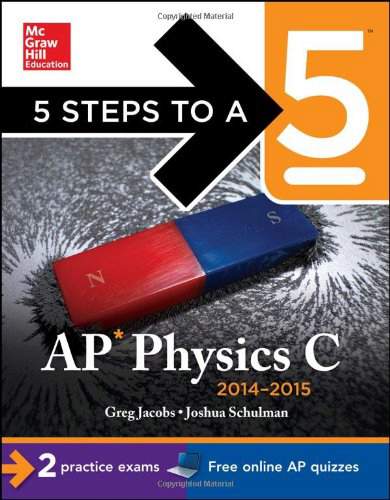Connecting...

This is a quick preview of the lesson. For full access, please Log In or Sign up.
For more information, please see full course syllabus of AP Physics C: Mechanics
For more information, please see full course syllabus of AP Physics C: Mechanics
AP Physics C: Mechanics Oscillations
Lecture Description
Oscillations are a grand topic in physics, and play a key role in many topics. For the purposes of this course, they will be included in the mechanics portion. Oscillations are such a big deal because they describe another way of moving. Up until now you’ve learned about linear and rotational motion, but what about the motions of waves? Think of a compressed spring that is released and how it bobs back and forth. While it may look like linear movement, there are quite a bit of math involved with that spring. For now, we’ll concern ourselves with simple harmonic oscillators to get an understanding of how oscillators look and how their movement is calculated. After this topic, it’s on to the final topic of mechanics!
Bookmark & Share
Embed
Share this knowledge with your friends!
Copy & Paste this embed code into your website’s HTML
Please ensure that your website editor is in text mode when you paste the code.(In Wordpress, the mode button is on the top right corner.)
×
Since this lesson is not free, only the preview will appear on your website.
- - Allow users to view the embedded video in full-size.
Next Lecture
Previous Lecture













































1 answer
Sun Jan 7, 2018 4:35 PM
Post by James Glass on January 7, 2018
Hello,
At 1:39, why does angular velocity = (k/m)^(1/2). Thanks
1 answer
Sun Mar 19, 2017 4:50 PM
Post by Zen Chawaldit on March 18, 2017
for the ap 2013 frq 3, question b, why is gravitational potential energy not included? the skier goes up the ramp, so there must be change in height.
1 answer
Thu Sep 1, 2016 5:41 AM
Post by El Einstein on September 1, 2016
Hello Professor Fullerton, I am confused on example VII (minute 45). Why did you set U=K? Isn't U=0 when at the equilibrium. And why did you set it equal to 5J? Can you explain this part in steps for me please.
1 answer
Sat Jan 9, 2016 12:44 PM
Post by Shehryar Khursheed on January 9, 2016
On example IV when youre deriving the SHM of a pendulum, can you please explain why there is a negative on the net torque: -mglsin(theta)? You said that as the angle gets smaller, the angular acceleration gets larger. That seems counter-intuitive to me. Thanks!
1 answer
Mon May 11, 2015 9:14 AM
Post by Joshua Bowen on May 10, 2015
Im trying to understand more about wave motion when it comes the the Sinusoidal Wave function, what is the difference between these functions:
x = Acos(wt) (and the derivatives of the function which equal the velocity, and acceleration)
and
y = Asin(kx-wt)
1 answer
Last reply by: Micheal Bingham
Fri Apr 24, 2015 10:20 AM
Post by Micheal Bingham on April 24, 2015
@ About 31:29, why is the slope of the T - sqr(l) Graph, 2pi/sgr(g) ?
2 answers
Sun Feb 15, 2015 10:30 AM
Post by Thadeus McNamara on February 14, 2015
@63:47, does W ALWAYS equal change in KE?
3 answers
Last reply by: Thadeus McNamara
Wed Feb 18, 2015 1:03 PM
Post by Thadeus McNamara on February 14, 2015
33:05 i still am not sure why mglsintheta is negative
1 answer
Sun Feb 15, 2015 10:27 AM
Post by Thadeus McNamara on February 14, 2015
@29:16, why is F at a maximum at the top, and why is F at a minimum at the bottom?
1 answer
Sun Feb 15, 2015 10:25 AM
Post by Thadeus McNamara on February 14, 2015
thanks for the previous answers. i have another question. @24:56, why did u write f=-k2x2 over the arrow? how is Feq equivalent to F2? You said it was because of Newton's third law but I dont know what you mean by that.
1 answer
Sat Feb 14, 2015 5:50 PM
Post by Thadeus McNamara on February 14, 2015
also during that same slide, why does w represent both angular velocity and angular frequency. what is angular frequency?
1 answer
Sat Feb 14, 2015 5:47 PM
Post by Thadeus McNamara on February 14, 2015
@4:56 is that the position, velocity, and acceleration of SHM problems or for circular problems?
1 answer
Last reply by: CHARINA TECSON
Wed Jan 21, 2015 10:55 PM
Post by CHARINA TECSON on January 21, 2015
Din example 1, did you ever convert minutes to seconds?